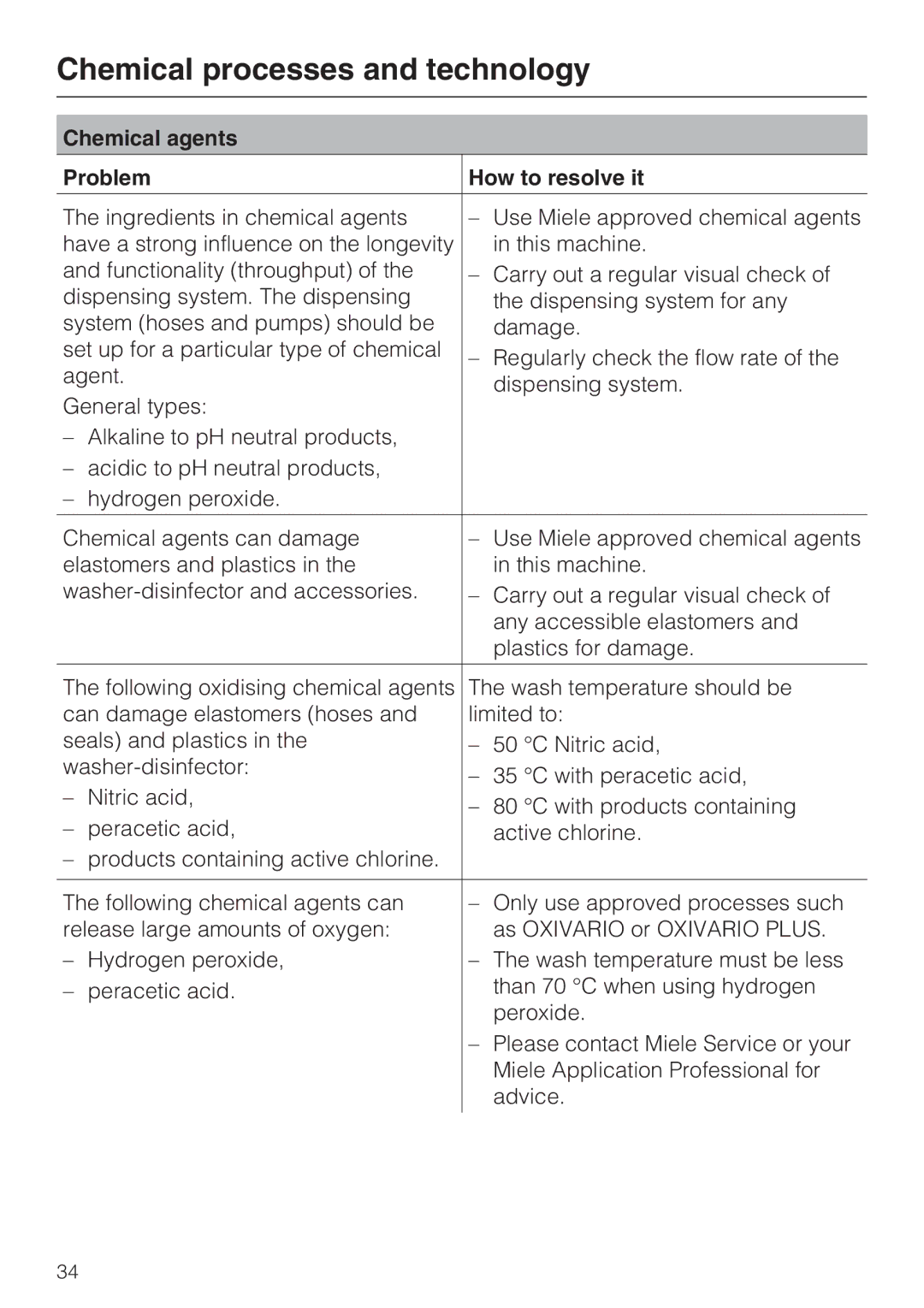Chemical processes and technology
Chemical agents
Problem | How to resolve it | |||
|
| |||
The ingredients in chemical agents | – Use Miele approved chemical agents | |||
have a strong influence on the longevity |
| in this machine. | ||
and functionality (throughput) of the | – Carry out a regular visual check of | |||
dispensing system. The dispensing |
| the dispensing system for any | ||
system (hoses and pumps) should be |
| damage. | ||
set up for a particular type of chemical | – | Regularly check the flow rate of the | ||
agent. | ||||
| dispensing system. | |||
|
|
| ||
General types: |
|
| ||
– | Alkaline to pH neutral products, |
|
| |
– | acidic to pH neutral products, |
|
| |
– | hydrogen peroxide. |
|
| |
|
| |||
Chemical agents can damage | – Use Miele approved chemical agents | |||
elastomers and plastics in the |
| in this machine. | ||
– Carry out a regular visual check of | ||||
|
|
| any accessible elastomers and | |
|
|
| plastics for damage. | |
|
| |||
The following oxidising chemical agents | The wash temperature should be | |||
can damage elastomers (hoses and | limited to: | |||
seals) and plastics in the | – | 50 °C Nitric acid, | ||
– | 35 °C with peracetic acid, | |||
|
| |||
– | Nitric acid, | – | 80 °C with products containing | |
|
| |||
– | peracetic acid, |
| active chlorine. | |
– | products containing active chlorine. |
|
| |
|
| |||
The following chemical agents can | – Only use approved processes such | |||
release large amounts of oxygen: |
| as OXIVARIO or OXIVARIO PLUS. | ||
– | Hydrogen peroxide, | – The wash temperature must be less | ||
– | peracetic acid. |
| than 70 °C when using hydrogen | |
|
|
| peroxide. | |
|
|
|
| |
34
